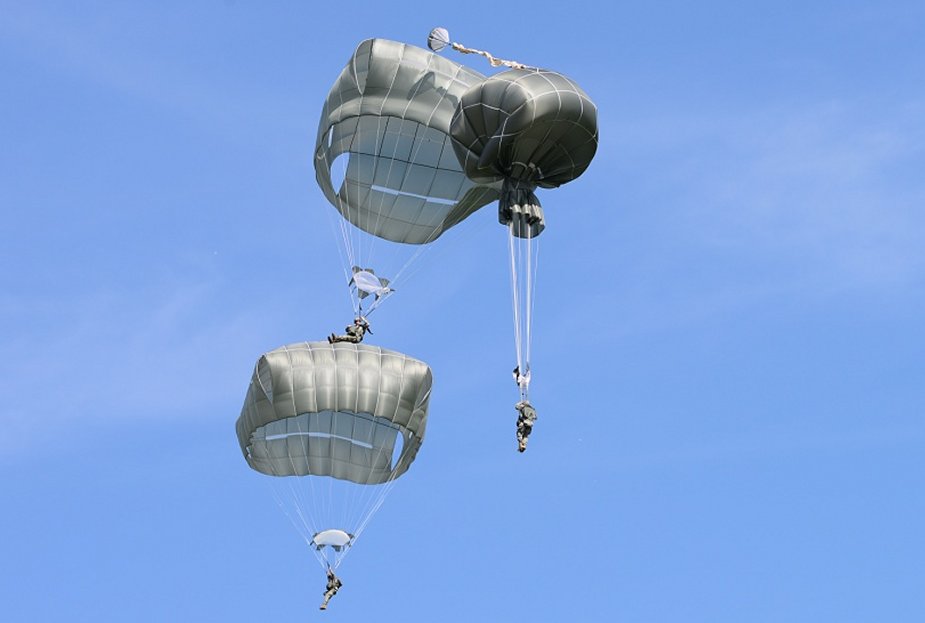Breaking news
T-11 parachute test in progress at U.S. Army Yuma Proving Ground.
The T-11 personnel parachute offers jumpers a slow and stable descent, especially in high winds, and can support more weight than previous parachutes, a crucial advantage for warfighters who carry robust, heavy gear.
Follow Army Recognition on Google News at this link

U.S. Army paratroopers with the 173rd Airborne Brigade execute emergency procedures in response to a T-11 parachute system malfunction during airborne training above the Nella Drop Zone in Tuscany, Italy, Aug. 7, 2014 (Picture source: U.S. Training Support Specialist Vincenzo Vitiello)
Also, since the T-11’s canopy deploys slowly and further away from the aircraft than preceding parachutes, the U.S. Army was able to increase the gross cargo weight of a Boeing C-17 Globemaster III aircraft by 15,000 pounds, which allows the aircraft to safely carry more fuel or cargo.
During developmental testing at U.S. Army Yuma Proving Ground (YPG) in the early 2000s, the T-11 proved to be a remarkably robust system, able to compensate for multiple kinds of malfunctions that testers intentionally rigged into it: When they tied the hem shut, the T-11 still inflated through corner vents. Even when testers put different reefing lines throughout the canopy and tried to restrict airflow inside, it still inflated.
Now long-fielded, the T-11 is still returning to YPG for further refinements and improvements. In addition to testing a new pack tray, testers are currently testing improvements to the T-11’s reserve parachute, which Soldiers count on in the unlikely event the T-11’s main parachute doesn’t deploy. “If a jumper exited the aircraft, did his six-second count and had no main above his head, he would pull the reserve parachute,” said Martin Gilbert, test officer.
The testing didn’t utilize live jumpers but torso mannequins with stubs for arms to simulate jumpers. The mannequins were ballasted with weight, then loaded onto an aluminum deployment rack specially designed and constructed by YPG engineers that is loaded into the cargo bay of a C-17. The deployment rack allows the aircrew to move and deploy the mannequins by means of a large crank, ensuring a safe and uniform drop from the aircraft. “We did low-speed reserve deployment with the main parachute fully inflated to check that the reserve uprights don’t entangle with the mains on deployment,” said Gilbert.
Since there is no physical instrumentation on the parachutes themselves during these tests, evaluators depend on GoPro cameras in the aircraft and ground-based tracking instruments for video and data of each parachute’s deployment, particularly the critically important first seconds of flight. Once each airdrop is complete, testers recover the landed parachutes, after which they undergo a meticulous inspection of the parachute systems for rips and tears.
YPG is home to all manner of parachute testing, with spacious and instrumented ranges large enough to accommodate even the world’s largest cargo parachutes.



















